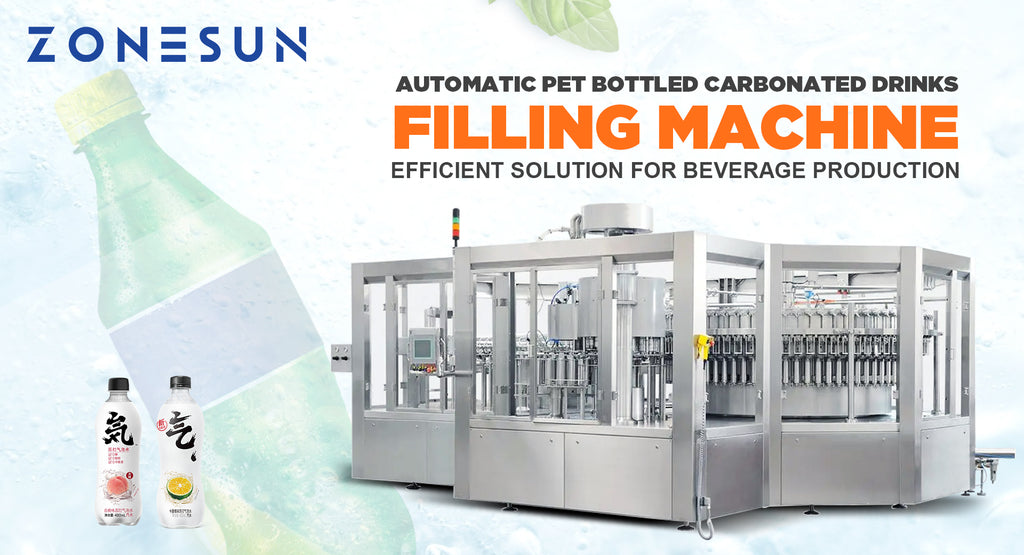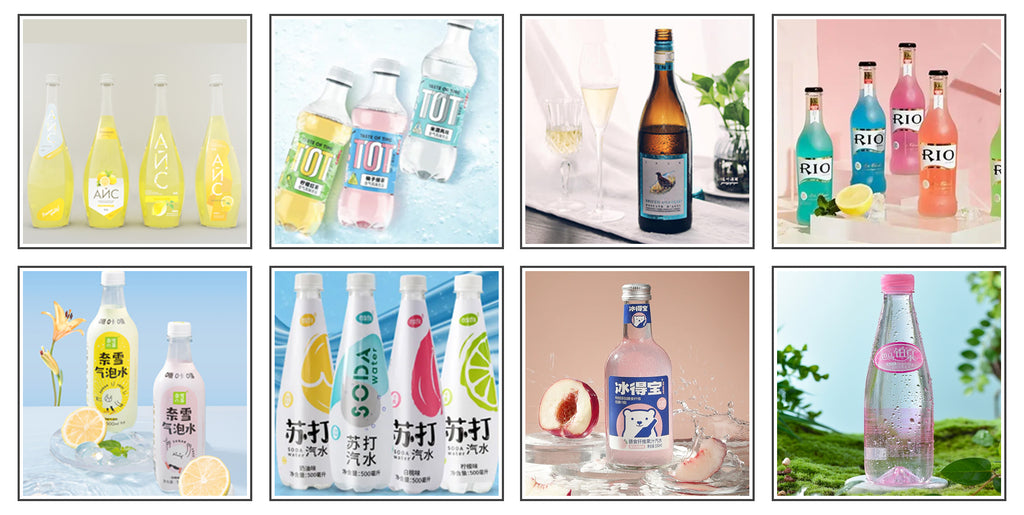ZONESUN ZS-AFMC Autoamtic PET Bottled Carbonated Drinks Filling Machin – Zonesunmall
Carbonated drinks have been a popular choice among consumers for decades, and their demand continues to rise globally. From classic cola to sparkling water and flavored sodas, the carbonated beverage industry is thriving. Behind the scenes, a crucial aspect of delivering these fizzy delights to the market is the bottling line, which plays a vital role in ensuring efficient production and maintaining product quality.

In recent years, the carbonated drinks bottling line has witnessed significant advancements in technology and automation. Manufacturers are increasingly investing in state-of-the-art equipment and turnkey solutions to streamline their production processes and meet the growing demands of consumers. Let's delve into some industry insights and explore the key factors driving the evolution of carbonated drinks bottling lines.

-
Efficiency and Productivity: With rising consumer expectations and market competition, manufacturers are under pressure to improve efficiency and productivity. Modern bottling lines are designed to minimize downtime, optimize throughput, and reduce human error. Automated machines with high-speed filling, capping, and labeling capabilities ensure faster production cycles, enabling manufacturers to meet tight deadlines and maximize output.
-
Precision and Consistency: Carbonation levels, flavor profiles, and product consistency are crucial factors in carbonated beverages. Bottling lines equipped with advanced filling technology ensure precise and uniform filling, maintaining the desired carbonation levels and taste experience in every bottle. Sophisticated control systems monitor and adjust the filling process, guaranteeing accuracy and consistency throughout production.
-
Flexibility in Bottle Sizes and Formats: Consumer preferences are diverse, and manufacturers need to cater to a wide range of bottle sizes and formats. Modern bottling lines offer flexibility, allowing for seamless transitions between different bottle sizes, shapes, and materials. This adaptability enables manufacturers to introduce new products, respond to market trends, and meet evolving consumer demands effectively.
-
Hygiene and Safety: Maintaining high hygiene and safety standards is paramount in the beverage industry. Bottling lines are designed with robust cleaning systems and sanitary features to ensure the elimination of contaminants and minimize the risk of cross-contamination. Strict adherence to industry regulations and certifications is crucial to guarantee product integrity and consumer trust.
-
Sustainability and Packaging: Environmental consciousness is driving the industry to adopt sustainable practices, and packaging plays a significant role in this endeavor. Bottling lines are incorporating eco-friendly materials and implementing efficient packaging solutions to reduce waste and carbon footprint. From lightweight bottles to recyclable packaging, manufacturers are actively seeking innovative ways to minimize environmental impact.
-
Integration and Data Analytics: Industry 4.0 technologies are revolutionizing bottling lines, enabling seamless integration and data-driven decision-making. Connected machines, IoT sensors, and real-time monitoring systems provide valuable insights into production performance, quality control, and predictive maintenance. This data-driven approach optimizes efficiency, reduces costs, and enhances overall operational effectiveness.

As the carbonated drinks industry continues to grow, the evolution of bottling lines remains pivotal in meeting market demands efficiently. Manufacturers are embracing cutting-edge technologies and turnkey solutions to achieve higher productivity, precision, and sustainability. By staying at the forefront of innovation and adapting to evolving consumer preferences, the carbonated drinks bottling line is poised for a dynamic future, ensuring a steady supply of fizzy refreshment for consumers worldwide.




1 comment
Incredibly insightful and appreciate the comprehensive overview of the key factors driving the evolution of bottling lines.
One aspect that caught my attention is the mention of the advancements in technology and automation. As a reader, I am particularly interested in learning more about the specific machines and equipment that this company provides for carbonated drinks bottling lines. Could you kindly provide additional information on the range of machines you offer, their capabilities, and any unique features that set them apart from competitors?